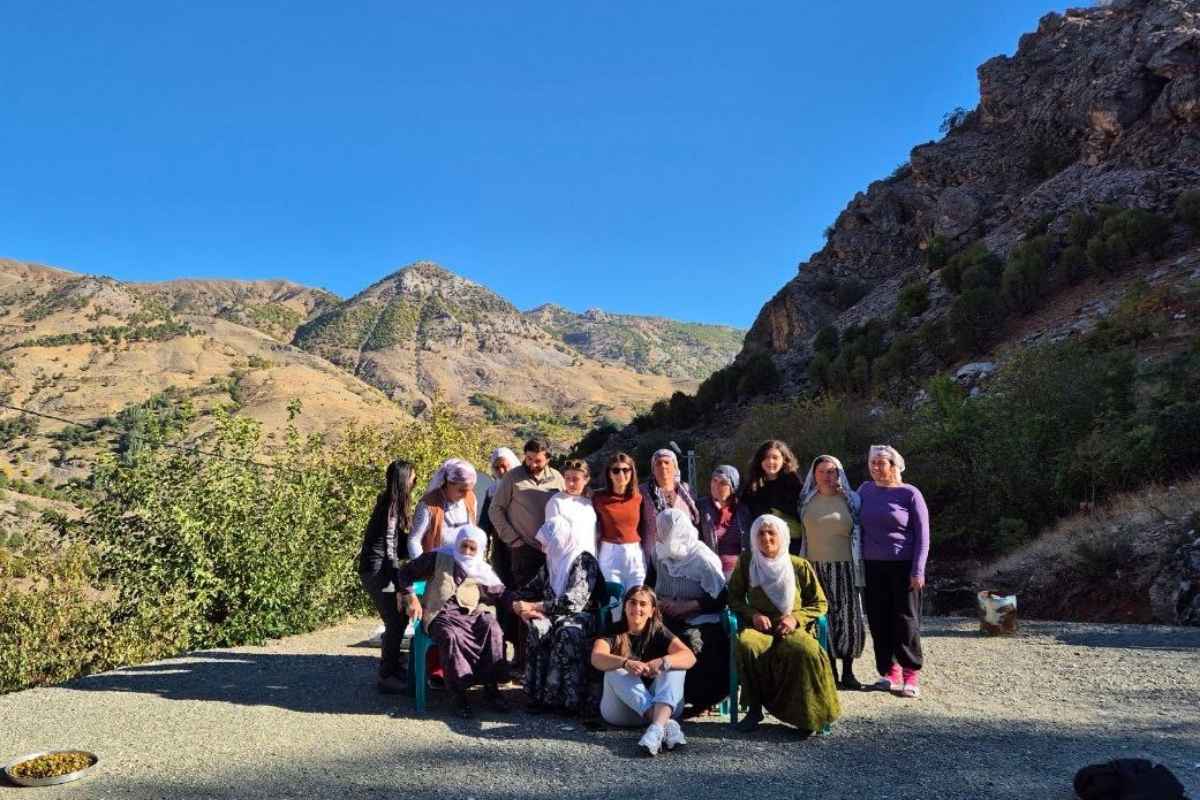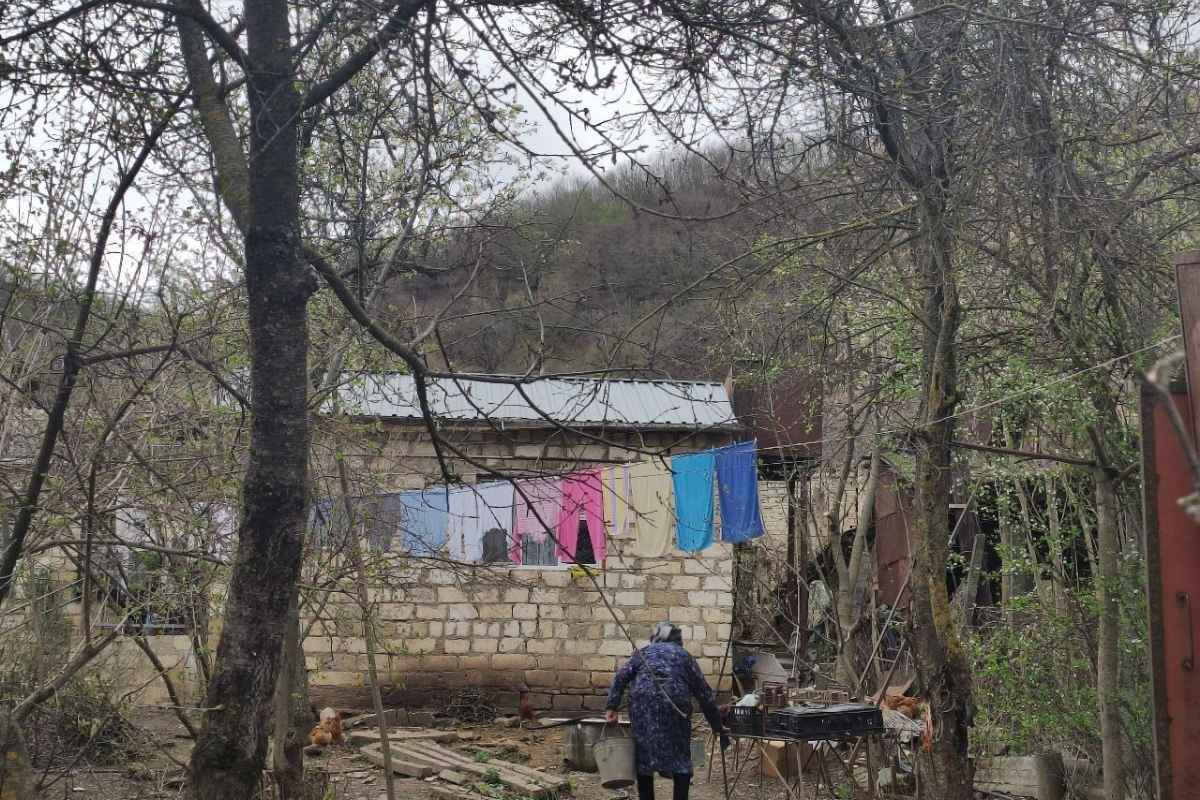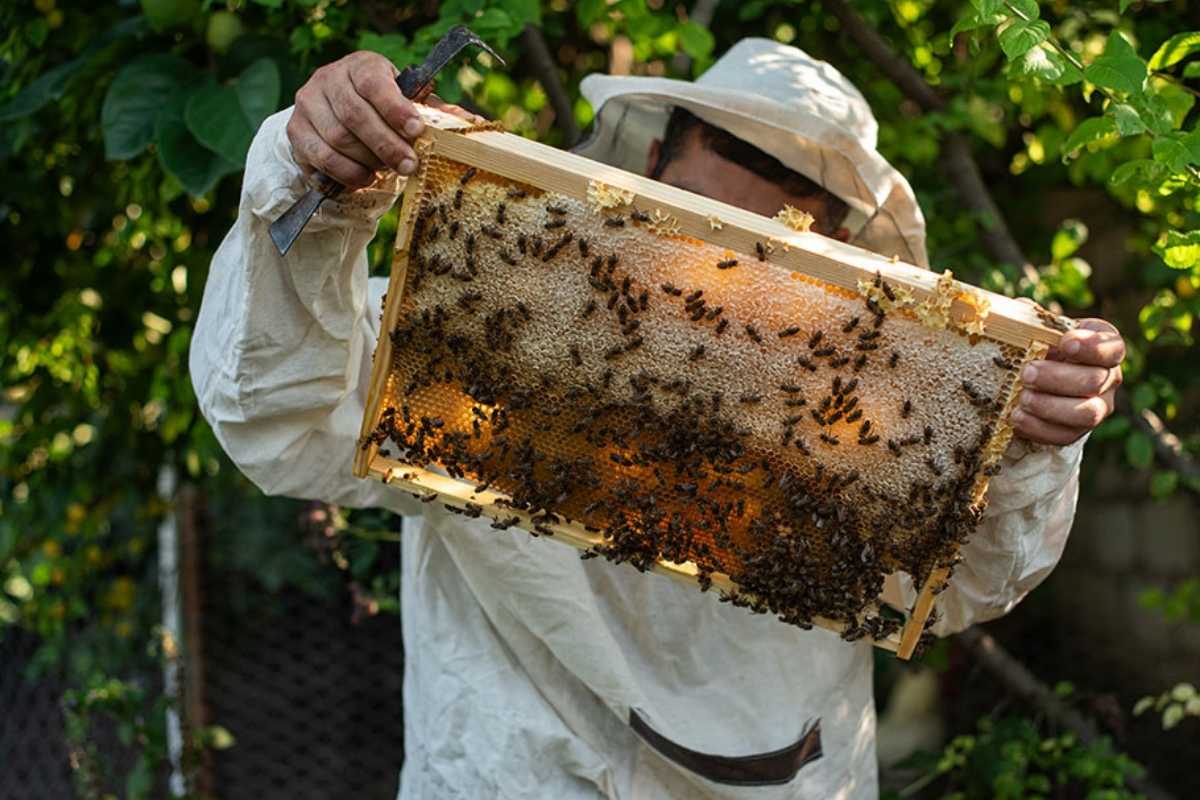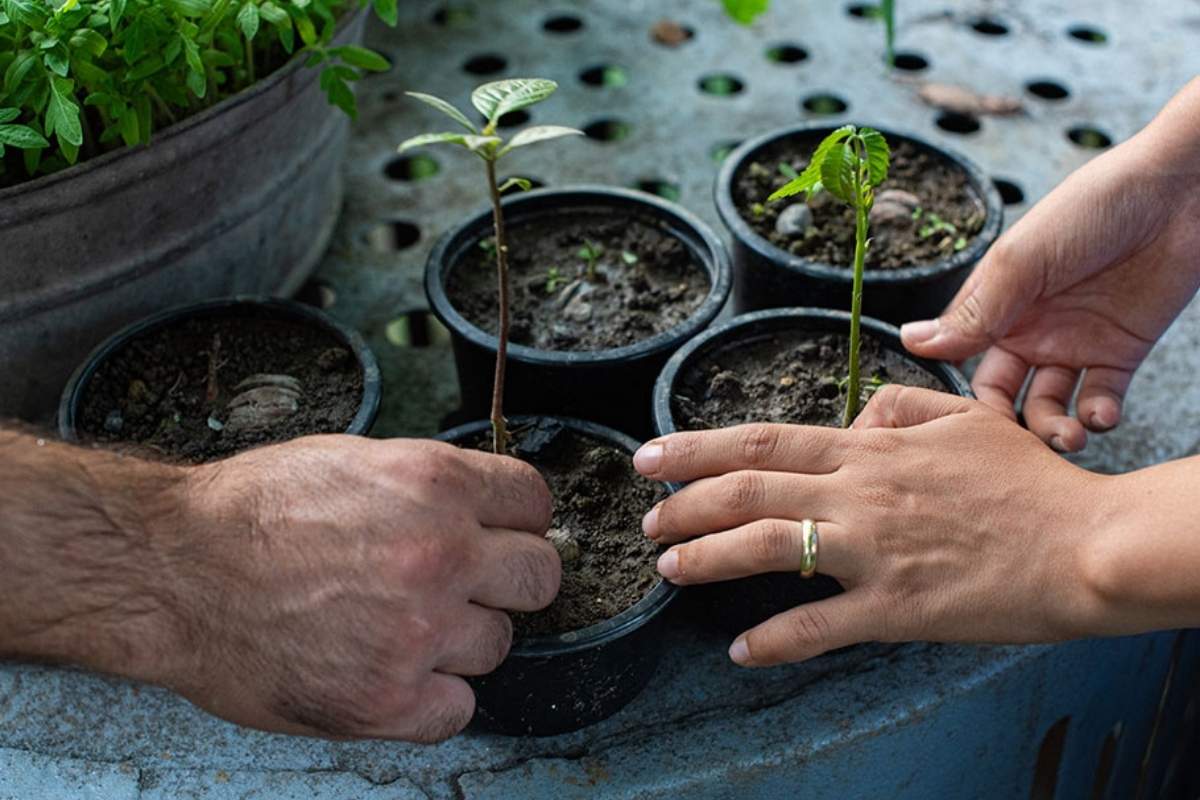My Way Home
11.07.2025
Repat Story
Finding Her Best Self: A Journey from Kyiv, Through Artsakh, to Ijevan
-webp(85)-o(jpg).webp?token=baaaf0a5711008c7993d2bcdeff5b846)
For the next repatriate story, I traveled to Ijevan to meet Sofia Hakopyan, who settled there with her husband. Leaving the big city and reviving her ancestors' traditions had long been her dream: her interest in beekeeping grew after meeting her husband, who had hives and made honey in his lost homeland of Hadrut.
Running Away from Kindergarten to Get to Yerevan
Sofia left the big city twice: the first move was her parents' choice (something she now appreciates), and the second was her own strong wish.
“I was born in Kyiv. My parents moved there from Yerevan. Returning to Armenia was always part of our lives. My dad said he didn’t start a business there because he knew we’d leave someday. He planned our move when we were still young to make adaptation easier. Before we moved, Dad visited family in Armenia every year, and I was lucky to go three times. I remember once running away from kindergarten in Kyiv. When the teachers caught me and asked where I was going, I said, ‘To Yerevan,’” Sofia begins.
Being in Your Own Skin
Years after those first visits, Sofia admits she felt at home then because everyone looked like her, and no one questioned her different language, hair color, or eye color. She cherished connecting with relatives, something she deeply missed in Kyiv. Other kids would visit grandparents and return with small treats. She still remembers the word “gostinets” (a small gift) — she never received one from her relatives back then.
“At home, we spoke Armenian but inevitably switched to Russian or Ukrainian. That worried Dad, and he insisted Mom answer us in Armenian. He believed home was the only place we could truly learn the language. When I was seven or eight, he brought me an Armenian primer. From then on, a lot changed, because it was hard for me. But it was important for me and my parents. Mom says that by about age five I could read and write Armenian, though I once threw down my pen in anger when I couldn’t spell my brother Hamazasp’s name. By the time we moved, I had a base, which helped me adapt to Armenian life,” Sofia recalls.
Moving to Armenia
Despite running away to Yerevan as a child, the actual move was hard. She didn’t want to leave Kyiv, but she didn’t resist and tried to stay positive.
Years later, reflecting on her early struggles, she realized: she was exactly where she belonged. She loved Armenia and wanted to stay.
“Something clicked — maybe it was the journalism I got into. Armenia is complicated, but once you start loving it, it’s forever,” Sofia says.
Choosing a Profession and Frequent Trips Home
Sofia is a former journalist, though she jokes that, like KGB agents, journalists are never really former journalists. Through journalism, she discovered Armenia in a new light, explored her roots, and shared her findings with readers — many of whom, she later learned, needed those stories.
“I took journalism courses at Bridge of Hope and wanted to enroll in journalism school, but my mentor Nune Aleksanyan advised me to study Turkology instead. I already spoke it well thanks to my maternal grandmother from Istanbul. I took a gap year, enrolled, and later studied Ottoman Turkish in Istanbul. After returning to Armenia, I wrote for various media outlets, covering Western Armenia and Armenians still living there for diaspora publications.”
“It was the most fascinating topic that consumed my life. I always say I followed in the footsteps of the dead — but found the living. Hrant Dink said we need to speak about genocide through the stories of those who survived. My paternal grandfather was from Sasun, so I often traveled there. It’s one of the regions with the largest number of Islamized Armenians. That subject remains central to my work,” Sofia continues.

The Book “Sasun: A Century of Resistance”
During her many trips, Sofia gathered little-known yet crucial information capable of changing mindsets and bridging dialogue between those who left and those who stayed. She published travel notes and articles. Over time, people reached out with new questions, realizing the depth of her material. Understanding the interest and having collected substantial content, she decided to compile it into a book.
“The book is called ‘Sasun: A Century of Resistance.’ We tend to speak of Western Armenia as a thing of the past, as if nothing happened there after 1915. But Armenians in Sasun resisted for decades, and the last Christian families only left about now — 110 years after the genocide. Few know many conversions to Islam occurred in the 1970s and ’80s, not a century ago. These are histories we forgot or refused because we closed the door on Western Armenia in 1915. I approached this as a journalist, not just as Amo’s granddaughter from Sasun. Many families in Armenia still have relatives in Sasun but don’t know it. There are language barriers, but we need to help them reconnect. That information was somehow overlooked,” she explains.
Published in 2021, just after the Second Artsakh War, Sofia thought no one needed the book then. Friends insisted the timing was perfect. Alongside her travel notes and articles, the book features first-person interviews with Sasun Armenians, offering a living dialogue between them and readers.
“The Voice of Hadrut”
Sofia didn’t stop there. She wanted to tell the truth about recent Artsakh events. While collecting aid for the displaced, she heard harrowing stories of atrocities in Hadrut. She realized her generation had never known about this ethnic cleansing.
“Few knew Hadrut was gone, that ethnic cleansing was happening. My generation complained the world ignored pogroms in Sumgait and Maraga. I imagined my children asking why they never learned about Hadrut,” she says.
She met many Hadrut survivors in Armenia and Artsakh, including her future husband Mher, who participated in search efforts post-war. He’s the only Hadrut native who hasn’t given her an interview. These stories were first published on Mediamax and later compiled in a book titled “The Voice of Hadrut.”
Moving to Artsakh and Life in Blockade
Sofia felt her writing was valuable but insufficient. People still struggled alone. In 2022, she decided to move to Artsakh to share daily life, fears, and uncertainties with its people.
“Many say I came to get married, but few realize I married because I wanted to move. Those were the calmest yet hardest years of my life. During the blockade, there was one place on Earth where I felt truly at peace — and not even the blockade could touch that,” Sofia admits.

She kept a blockade diary, wrote about daily hardships, but never stopped writing about beloved Sasun. That topic, she says, was the boundary of her inner freedom — a freedom the blockade could not touch.
“Escaping” Yerevan to Ijevan
After Artsakh, Sofia and Mher moved to Ijevan. If living in Artsakh wasn’t possible, they wanted to be useful elsewhere — somewhere they could build a life and raise children.
“I always wanted to live in Ijevan but never thought it would be instead of Artsakh. Every additional person in the provinces helps our country survive. City life isn’t safe — it’s a worrying future. When asked what to do, I say: move to the regions. If nothing changes after Kirants, we’re in real trouble,” Sofia says.
Reviving Family Traditions
In Ijevan, Sofia and her husband run a greenhouse, keep beehives, and plan to focus on honey production. Mher did this in Hadrut, and her Sasun ancestors were beekeepers too. The young family aims to continue these traditions from Artsakh and Sasun.

Photo credits: Mediamax
So Where Is Home?
For twenty years, Sofia has been discovering the many layers of homeland that have shaped her. She values all her “small homelands:”
“There’s the historical homeland, the one our parents chose, and the one we choose ourselves. Each serves a purpose: temporary homes teach us to live with reality and shape our identity. In Western Armenia, I learned that land isn’t just a birthright — it’s a value we must strive for. We must become better to reach it.
Historical homeland teaches lessons from our history. It’s like an Armenian saying: ‘Get wise, or you’ll end up like me.’ It’s the father helping you up after a fall and making you stronger.
And the most important homeland is where we want our children to live. For me, that’s Armenia — a mother whose mission is to make us the best versions of ourselves. Living here can be tough, and some feel forced to stay so their kids can be Armenian. But it’s also a wonderful place to live.”

Photo credits: Mediamax
Sofia’s journey into the heart of our homeland continues. As an Armenian-speaking guide in Western Armenia, she uncovers hidden layers of the past and invites others to join in these discoveries.
By Nare Bejanyen
-
News
-webp(85)-o(png).webp?token=f37ae16e3d39e65dcd2a12f487f7bf27) 24.03.20253 min readFind a job in Armenia more easily with staff.am and Repat Armenia
24.03.20253 min readFind a job in Armenia more easily with staff.am and Repat Armenia -
Repat Story
-webp(85)-o(jpg).webp?token=1288c94320c03ca30a5ed612b072b0db) 22.01.20257 min readConductor Nvart Andreassian: Five Decades of Experience for Armenia
22.01.20257 min readConductor Nvart Andreassian: Five Decades of Experience for Armenia

-webp(85)-o(png).webp?token=b52e9ea1baa1cd28354d961b83f55db1)
-webp(85)-o(jpg).webp?token=07352c0360f0f819aa4c582884d00c40)